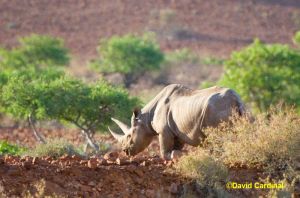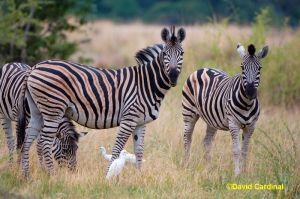- Photo Safaris
- Alaska Bears & Puffins World's best Alaskan Coastal Brown Bear photo experience. Small group size, idyllic location, deluxe lodging, and Puffins!
- Participant Guestbook & Testimonials Candid Feedback from our participants over the years from our photo safaris, tours and workshops. We don't think there is any better way to evaluate a possible trip or workshop than to find out what others thought.
- Custom Photo Tours, Safaris and Personal Instruction Over the years we've found that many of our clients & friends want to participate in one of our trips but the dates we've scheduled just don't work for them or they'd like a customized trip for their family or friends.
- Myanmar (Burma) Photo Tour Myanmar (Burma) Photo Tour December 2017 -- with Angkor Wat option
- Reviews Go hands-on
- Camera Reviews Hands-on with our favorite cameras
- Lens reviews Lenses tested
- Photo Accessories Reviews Reviews of useful Photo and Camera Accessories of interest to our readers
- Useful Tools & Gadgets Handy tools and gadgets we've found useful or essential in our work and want to share with you.
- What's In My Camera Bag The gear David Cardinal shoots with in the field and recommends, including bags and tools, and why
- Articles About photography
- Getting Started Some photography basics
- Travel photography lesson 1: Learning your camera Top skills you should learn before heading off on a trip
- Choosing a Colorspace Picking the right colorspace is essential for a proper workflow. We walk you through your options.
- Understanding Dynamic Range Understanding Dynamic Range
- Landscape Photography Tips from Yosemite Landscape Photography, It's All About Contrast
- Introduction to Shooting Raw Introduction to Raw Files and Raw Conversion by Dave Ryan
- Using Curves by Mike Russell Using Curves
- Copyright Registration Made Easy Copyright Registration Made Easy
- Guide to Image Resizing A Photographers' Guide to Image Resizing
- CCD Cleaning by Moose Peterson CCD Cleaning by Moose Peterson
- Profiling Your Printer Profiling Your Printer
- White Balance by Moose Peterson White Balance -- Are You RGB Savvy by Moose Peterson
- Photo Tips and Techniques Quick tips and pro tricks and techniques to rapidly improve your photography
- News Photo industry and related news and reviews from around the Internet, including from dpreview and CNET
- Getting Started Some photography basics
- Resources On the web
- My Camera Bag--What I Shoot With and Why The photo gear, travel equipment, clothing, bags and accessories that I shoot with and use and why.
- Datacolor Experts Blog Color gurus, including our own David Cardinal
- Amazon Affiliate Purchases made through this link help support our site and cost you absolutely nothing. Give it a try!
- Forums User to user
- Think Tank Photo Bags Intelligently designed photo bags that I love & rely on!
- Rent Lenses & Cameras Borrowlenses does a great job of providing timely services at a great price.
- Travel Insurance With the high cost of trips and possibility of medical issues abroad trip insurance is a must for peace of mind for overseas trips in particular.
- Moose Peterson's Site There isn't much that Moose doesn't know about nature and wildlife photography. You can't learn from anyone better.
- Journeys Unforgettable Africa Journeys Unforgettable -- Awesome African safari organizers. Let them know we sent you!
- Agoda International discounted hotel booking through Agoda
- Cardinal Photo Products on Zazzle A fun selection of great gift products made from a few of our favorite images.
- David Tobie's Gallery Innovative & creative art from the guy who knows more about color than nearly anyone else
- Galleries Our favorite images
DPS 4-1: African Photo Safari, Southern Style
DigitalPro
Shooter
DigitalPro Shooter Volume 4, Issue 1, December 18, 2005
|
Southern Africa Photo Safari:
|
I’ve just returned from several weeks in Botswana,
Namibia and South Africa leading a photo safari & also doing some shooting
afterwards with some of the participants. It was truly an inspiring event.
We had day after day of exciting shooting opportunities, unique looks at the
natural world and its animals and chances to learn plenty of photography from each
other. Our enthusiastic participants ranged from seasoned digital photographers to those
just picking up their first D-SLR. But the small group size (9 participants
with 2 photo instructors, in addition to a tour leader and 3 local guides) ensured that everyone got plenty of individual
attention.
Getting There
| There are two ways to think about the long flight from the US to southern Africa. Either as a long and tedious ordeal or as the necessary distancing of oneself from everyday life before plunging headlong into the bush. Either way it takes awhile and you’re very ready to to believe that you are at the end of the earth by the time you arrive at your first bush camp. In my case I was excited to finally be on a trip we had |
Why a Digital Photo Safari?
| First and foremost, having a safari where everyone is thinking about photography is a real treat. Each day's activities are planned with photo opportunities and educational possibilities in mind. Participants have plenty of time to interact with instructors and the “instant review†capability of digital allows progress in leaps and bounds. But there are many other less obvious but quite important reasons to participate in a dedicated digital photo safari, beginning with logistics: |
One of the standard problems when traveling to Africa
intending to photograph is luggage. Most tours don’t really allow you to
bring enough gear to do a proper job of photographing wildlife or
scenery. Even a tripod is usually out of the question when your luggage is
limited to the standard 26 or 44 pounds when traveling on small planes in
the area. We’d made special arrangement for a larger plane so we could take our photo equipment along
with us, a necessity for any serious photography.
Another obvious problem with doing photography on a
standard safari is “photo etiquette.†People moving around in trucks can
ruin the best of shots. When a group is all photographers it is standard
practice for everyone to stay still while shooting—knowing that we’d find a
way for each participant to get some great shots before leaving a prime photo opportunity.
A related problem is attention span. Many tourists are
happy to see as many animals as possible, racing off to the next after a
brief “Wow!†Photographers, of course, can stay and work on photographing a
gorgeous creature like a leopard for hours. By having a specialized tour we
were able to spend as much time as we needed getting the very best shots for
our participants.
And finally there is what to do with the photos. All
safaris feature a few hours of “downtime†most days when the blazing sun is
too bright and the temperature too hot for people and most animals. However,
in this case we’d brought along laptops and a digital projector so we could
teach sessions on wildlife photography, digital workflow and photo editing
in between game drives. Best yet we could work on participants’ images that
they had shot that day, providing real time feedback and learning while we
were still in the field. To accommodate this we’d also needed to make
special arrangements to have enough electrical power at the camp. For participants un-interested in the
photo talks the game guides, often natives of the area, spoke about the
local wildlife and ecosystem.
We did all this with a small group—just 9 participants
in this case, with a maximum of 10—so that we could fit comfortably in the
smallest and most spectacular camps and also to ensure that everyone had
lots of time for personalized instruction and we had plenty of room to work
our subjects without overwhelming or stressing them.
Having been to Africa before on trips which were
exciting but didn’t have all these special touches the participants and I
really appreciated these extras which helped make the safari both a
“trip of a lifetime†and a true photographic success.
Africa—The Southern Way
| Everyone is familiar with the spectacular wildlife viewing opportunities available in Africa, but not everyone understands how Southern Africa (especially Botswana and Namibia) differ in from Eastern Africa (typically Kenya and Tanzania). Botswana and Namibia have implemented a private concession system. This provides limited and exclusive access to entire areas of the country to those staying within them. The result is a true safari experience. Many days we saw no one else but our group when out on safari. This contributes to a unique sense of the vastness of the African landscape and to the special feeling when coming across a sighting. By contrast the most famous areas of Eastern Africa are public parks densely traveled by safari vehicles. A kill or other sighting is often followed by the arrival of many other trucks and kill sites often look like parking lots. In my case I’m addicted to the Southern African experience. |
Safari—The Game Drive
| Each day we started before dawn, to capture the sunrise and make sure we were in the field for the early morning light. Never did a mile go by without some type of photographic opportunity for antelope or a colorful bird. In Botswana in particular the variety of wildlife was breathtaking. In our 12 days in the bush we photographed well over 130 species, including 38 species of mammals and 70 species of birds. While we were busy photographing the animals we saw, our guides were looking for tracks or sounds of the more elusive predators including Leopard, Lion and Cheetah or some of the large herbivores including Black Rhino, Hippo, Elephants and Giraffe. If we found tracks it was off across the bush for some “off-roading†as we tracked the animals. Another advantage of the private concessions we used was that we were normally able to go off-road to track interesting animals because the very low density of vehicles limits the damage to the environment to that which can be ‘repaired’ quickly by nature. Wilderness Safaris limits the number of vehicles near sensitive animals to a maximum |
Our guides were excellent trackers, and we were able to
see leopards, lions and cheetahs on many occasions, and follow them as they
hunted. We saw several kills and near misses, and were also able to watch a
pride of lions lead their cubs to a hidden killed Warthog for feeding and a
Wildebeest escape from two cheetahs when a Hyena attempted to get involved
and ‘poach’ the wildebeest from the cheetahs.
Sundowners
The Photography
Of course on a photo safari the big question is always
“how was the photography?†Awesome! I've listed just a few of the many
highlights below. And of course all the photos in this newsletter and in my
trip
gallery were taken during the two weeks of the trip--and represent
just a tiny fraction of the nearly 8000 images I captured while I was there. We'll be assembling
a participants gallery as well, as Mike, Steve and I were all blown away by
how much the participants improved while they were there and by some of
their great images.
Namibia
| Unlike the relatively verdant and game rich areas of Botswana, Namibia is largely desert and semi-desert. The resulting harsh environment of rocky plains, huge sand dunes and brittle crust create a sur-real environment unique on the planet. While the animal photography opportunities are more limited than Botswana, the scenics can be breathtaking and the animal sightings take on a special significance as the creatures we see there are the less common desert-adapted versions of their savannah-bound cousins. Our group loved Namibia and many of us can’t wait to go |
Classroom in the Bush
|
Thanks to some great logistics support from Wilderness we were not only able to make sure that everyone could recharge their cameras and laptops at each camp, but we had a digital projector and screen so we could review the days shooting and teach for an hour or two each day. We covered topics ranging from wildlife photography techniques to using Photoshop to enhance the images we captured. The small group size (trips are limited to 10 photographers) allowed us to provide plenty of personalized instruction. We also choose small camps so we were normally able to |
Eat, Drink and be Merry
| Wilderness pampered us, starting with a breakfast buffet each morning before we went out and continuing with excellent food for either brunch or lunch each day as well as at tea time before we went out on our evening game drive and then awesome dinners when we returned. The only drawback is I’m pretty sure none of us lost any weight. None of the 12 of us ever got the slightest bit sick from anything there, which is quite a tribute to the high standards of hygiene in the camps. Each camp also has a fully stocked bar, and plenty of bottled water, so we were always provided for. |
All of the camps had flush toilets in the “tentsâ€
(these tents were really more like small bungalows featuring showers, sinks,
and toilets) and most featured raised boardwalks from the common areas out
to the privately situated tents—allowing the animals to wander freely around
camp. The staff is there to escort guests to their rooms after dark.
2006 Trips
|
I’ll be doing two trips in 2006 (in partnership with For more information on the trips, visit my safari
|
| Trip news:
Grizzly bear trip, Last Chance: Africa 2006: |
--David Cardinal, Editor, DigitalPro Shooter
New Products
Epson Print Academy expanded to 2 days, one for D-SLR enthusiasts and one for
Pros: Read the details on our homepage:
http://www.nikondigital.org
Nikon is now shipping the Nikon D200 D-SLR (10.2MP, 5fps, D2-like
controls & feature sub-set). I played with one a little and was quite impressed
by how similar the controls are to the D2X and D2H. I think it would be an
excellent backup camera for a pro with a D2X and is certainly a good "step-up"
camera for someone looking to move up from the D50 or D70. In my case I don't
see how to justify the expense since I already have a D2X and a D2H (which I
like for the clean 8fps and convenient file size), but I like the D200 enough
(the same way I enjoyed having an F100) that I'll continue to try to think of a
reason to get one!
Magix has introduced PhotoStory on CD & DVD 4. For users
looking for a more powerful but inexpensive alternative to Microsoft's free
PhotoStory for Windows, Magix has a very competent product offering. I've been
experimenting with it and like the fairly simple user interface which is still
powerful enough to allow you to create flexible timelines and audio tracks.
Magix PhotoStory can produce movies or CD or DVD slideshows. I'll be doing a
more complete review of it and ProShow Producer (a much more expensive product)
in a future DPS. Magix PhotoStory retails for $39.99.
|
|
DigitalPro Tip
DigitalPro 4 for Windows image browsing & cataloging software has just been released. It is faster than ever, with literally
dozens of user-requested new features & user-interface enhancements. You can
learn more or download it
here.
dozens of user-requested new features & user-interface enhancements. You can
learn more or download it
here.
--David Cardinal, Editor, DigitalPro Shooter
If you have a hot tip or news item for DigitalPro Shooter,
write us at dps@proshooters.com. If
your tip or news item is picked as the Shooters' Tip of the Week, we'll send you
a really cool DigitalPro hat! Or just write us to let us know what you think of
the newsletter.
To keep up with the latest articles and reviews, join
me at http://www.nikondigital.org.
For the latest versions of DigitalPro, visit
http://www.proshooters.com/dp.
Good shooting!
--David Cardinal, editor DigitalPro Shooter
nikondigital.org / Pro Shooters LLC
--------------------------------------
To Unsubscribe, please click here.
- Log in to post comments

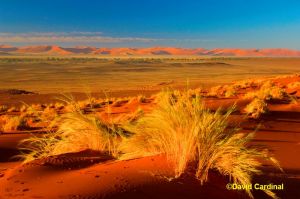
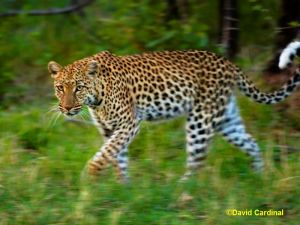
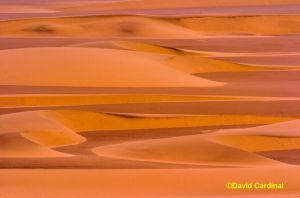
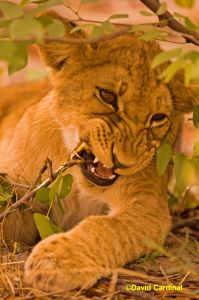
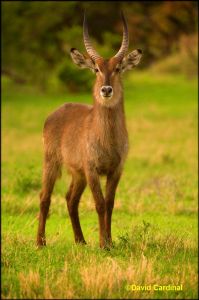
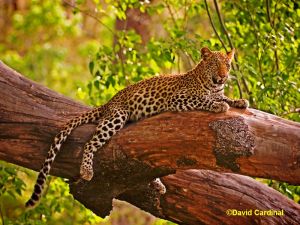
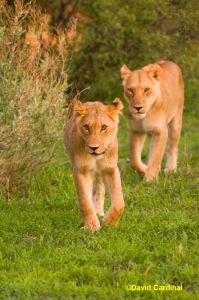
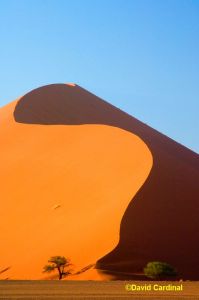
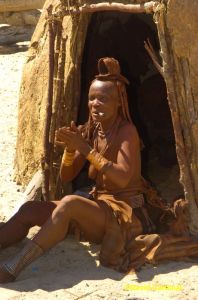
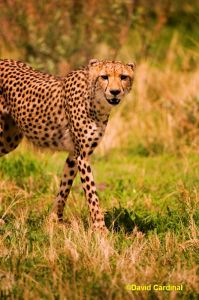 Unlike other cats, Cheetah
often hunt during the day
Unlike other cats, Cheetah
often hunt during the day